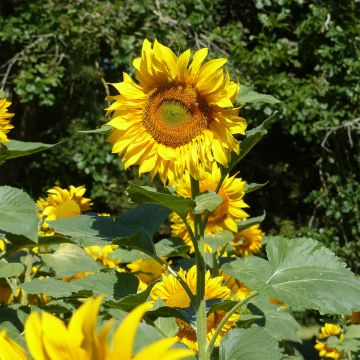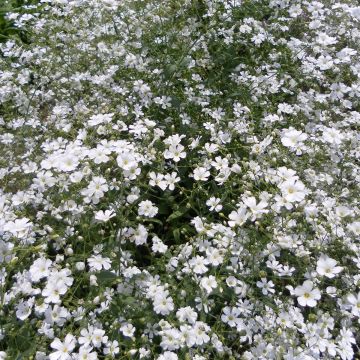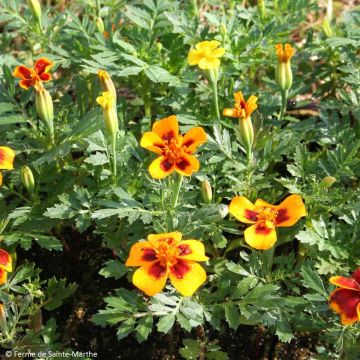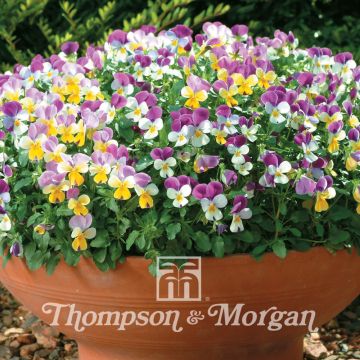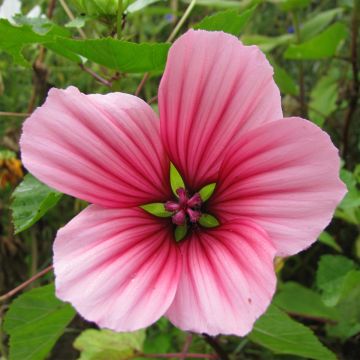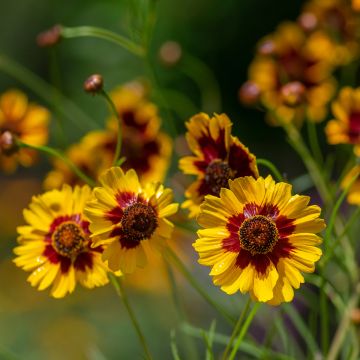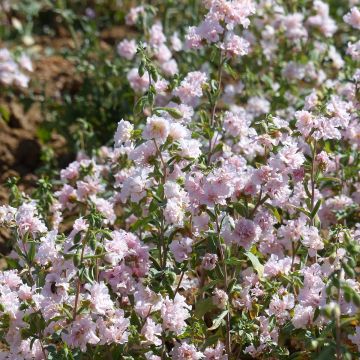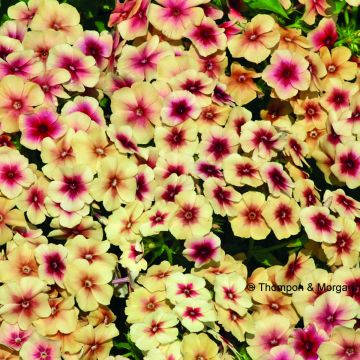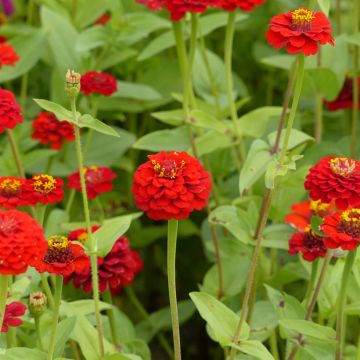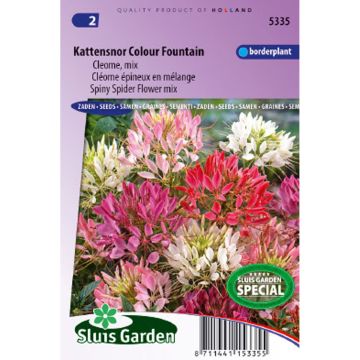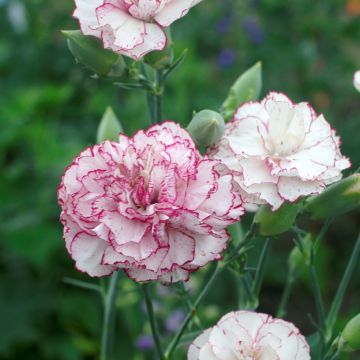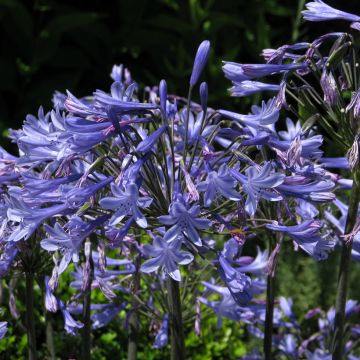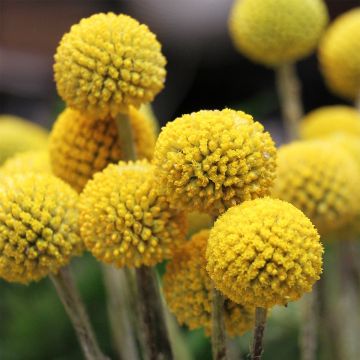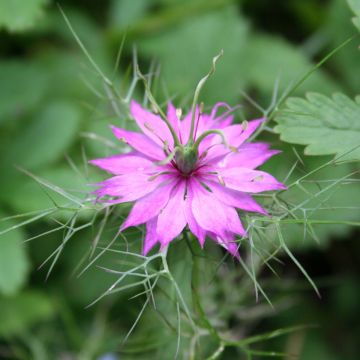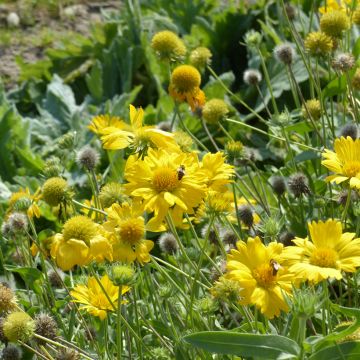

Penstemon digitalis Husker Red Seeds - Foxglove beardtongue
Penstemon digitalis Husker Red Seeds - Foxglove beardtongue
Penstemon digitalis Husker Red
Foxglove Beardtongue, Smooth White Beardtongue
This item cannot be shipped to the selected country
Dispatch by letter from €3.90
More information
Schedule delivery date,
and select date in basket
This plant carries a 6 months recovery warranty
More information
We guarantee the quality of our plants for a full growing cycle, and will replace at our expense any plant that fails to recover under normal climatic and planting conditions.
Seed-only orders are dispatched by sealed envelope. The delivery charge for seed-only orders is €3.90.
Does this plant fit my garden?
Set up your Plantfit profile →
Description
Penstemon digitalis Husker Red, also known as Foxglove Beardtongue is a truly extraordinary variety that has been a success for decades. It displays dark stems embellished with white, tinged with pale pink, bell-shaped flowers atop of maroon-red evergreen foliage. Blooms from June to October. For well-drained soils. This perennial is highly reliable and probably one of the most hardy penstemons in well-drained soil. Its elegant and airy blooms are perfect in borders and flowerbeds where they liven up the garden from June to October. Grow it in any garden, in a sunny position with well-drained soil.
Penstemon digitalis belongs to the family Scrophulariaceae, just like foxglove which carries very similar flowers. However, while the latter is European, Foxglove Beardtongue is of American origin. It is mainly found in the east and south-east of the United States, growing in rather dry areas such as meadows or open forests, on well-drained silt soil or sandy soil. The Husker Red variety's robust clump develops a basal rosette of large evergreen leaves that are a shiny purplish green on top with maroon-red undersides. In spring, the leafy, purple-brown stems grow to a height of about 60 cm. They bear a number of white, slightly pinkish, tubular flowers that are grouped in pairs at their tips. This variety is one of the hardiest in well-drained soils and withstands dry shade well.
Penstemon Husker Red is useful in borders and in perennial beds, combined with lily of the Nile, caryopteris, Rhodanthemum hosmariense, African daisies or mixed with annuals such as love-in-a-mist. Its airy blooms go well with the round corollas of old garden roses (such as Salet, Yolande d'Aragon). It will mingle nicely between the stones of a rock garden (in soil that is not too chalky), with rosemary, lavender-cotton, rockrose or sagebrush. It also performs very well in pots, provided the medium is properly drained and fertilizer is applied on a regular basis. Penstemons also make very good cut flowers.
Report an error about the product description
Flowering
Foliage
Plant habit
Botanical data
Penstemon
digitalis
Husker Red
Scrophulariaceae (Plantaginaceae)
Foxglove Beardtongue, Smooth White Beardtongue
Cultivar or hybrid
Other Thompson and Morgan seeds
Planting and care
Sowing:
Sow Penstemon seeds indoors or in under glass from February to April. Sow on the surface of a good quality soil, covering them with a very thin layer of compost or vermiculite. Place the seed tray in a mini-greenhouse at a temperature of 15-20 °C or in a transparent polyethylene bag until germination which may take 1 to 4 months. Keep the compost moist but not wet and do not exclude light as this helps germination.
When the seedlings are large enough to be handled, transplant them into 8 cm pots in trays and grow the plants in colder conditions. When all risk of frost has passed, gradually allow them to acclimatize to outdoor conditions for 7 to 10 days before planting them outdoors. Space the plants 30 cm apart. Choose fertile, light and well-drained soil, in a sunny or partially shaded position. Penstamons tolerate dry soils which tend to make them go dormant, but heavy soil which is particularly cold and wet in winter must be avoided at all costs. Improve heavy, clay soils by adding plenty of gravel or coarse sand before planting.
Cultivation:
The type and quality of the soil is crucial to the successful cultivation of penstemons. They appreciate rather rich, moist to dry soils that are very well-drained, especially in winter. They rot very quickly in soil that is too wet. In a cool climate, place the plants in a warm, sunny position, sheltered from cold winds (south or west facing). In hot climates, choose a cool, partially-shaded position. Penstemon digitalis Husker Red is one of the most resistant. It can withstand frost down to -20 °C but only if the soil is well-drained. In very cold and humid regions, it is advisable to take stem cuttings in autumn. It does not suffer from any specific diseases. This plant requires very little maintenance but when removing the spent flowers in the autumn, take care to shorten the faded stems slightly without cutting them down to ground level, especially in areas where winters are wet. Foliage plays an important role in moisture regulation. Wait until spring sets in (March-April) to shorten branches whose foliage has been damaged by the cold. If the summer is dry, water regularly to sustain flowering. In the coldest regions, cover the base of the plant with glass or a frame to protect it from the extreme cold. Divide your plants in spring, every three or four years to rejuvenate them.
Sowing period
Intended location
-
, onOrder confirmed
Reply from on Promesse de fleurs
Flower seeds
Haven't found what you were looking for?
Hardiness is the lowest winter temperature a plant can endure without suffering serious damage or even dying. However, hardiness is affected by location (a sheltered area, such as a patio), protection (winter cover) and soil type (hardiness is improved by well-drained soil).

Photo Sharing Terms & Conditions
In order to encourage gardeners to interact and share their experiences, Promesse de fleurs offers various media enabling content to be uploaded onto its Site - in particular via the ‘Photo sharing’ module.
The User agrees to refrain from:
- Posting any content that is illegal, prejudicial, insulting, racist, inciteful to hatred, revisionist, contrary to public decency, that infringes on privacy or on the privacy rights of third parties, in particular the publicity rights of persons and goods, intellectual property rights, or the right to privacy.
- Submitting content on behalf of a third party;
- Impersonate the identity of a third party and/or publish any personal information about a third party;
In general, the User undertakes to refrain from any unethical behaviour.
All Content (in particular text, comments, files, images, photos, videos, creative works, etc.), which may be subject to property or intellectual property rights, image or other private rights, shall remain the property of the User, subject to the limited rights granted by the terms of the licence granted by Promesse de fleurs as stated below. Users are at liberty to publish or not to publish such Content on the Site, notably via the ‘Photo Sharing’ facility, and accept that this Content shall be made public and freely accessible, notably on the Internet.
Users further acknowledge, undertake to have ,and guarantee that they hold all necessary rights and permissions to publish such material on the Site, in particular with regard to the legislation in force pertaining to any privacy, property, intellectual property, image, or contractual rights, or rights of any other nature. By publishing such Content on the Site, Users acknowledge accepting full liability as publishers of the Content within the meaning of the law, and grant Promesse de fleurs, free of charge, an inclusive, worldwide licence for the said Content for the entire duration of its publication, including all reproduction, representation, up/downloading, displaying, performing, transmission, and storage rights.
Users also grant permission for their name to be linked to the Content and accept that this link may not always be made available.
By engaging in posting material, Users consent to their Content becoming automatically accessible on the Internet, in particular on other sites and/or blogs and/or web pages of the Promesse de fleurs site, including in particular social pages and the Promesse de fleurs catalogue.
Users may secure the removal of entrusted content free of charge by issuing a simple request via our contact form.
The flowering period indicated on our website applies to countries and regions located in USDA zone 8 (France, the United Kingdom, Ireland, the Netherlands, etc.)
It will vary according to where you live:
- In zones 9 to 10 (Italy, Spain, Greece, etc.), flowering will occur about 2 to 4 weeks earlier.
- In zones 6 to 7 (Germany, Poland, Slovenia, and lower mountainous regions), flowering will be delayed by 2 to 3 weeks.
- In zone 5 (Central Europe, Scandinavia), blooming will be delayed by 3 to 5 weeks.
In temperate climates, pruning of spring-flowering shrubs (forsythia, spireas, etc.) should be done just after flowering.
Pruning of summer-flowering shrubs (Indian Lilac, Perovskia, etc.) can be done in winter or spring.
In cold regions as well as with frost-sensitive plants, avoid pruning too early when severe frosts may still occur.
The planting period indicated on our website applies to countries and regions located in USDA zone 8 (France, United Kingdom, Ireland, Netherlands).
It will vary according to where you live:
- In Mediterranean zones (Marseille, Madrid, Milan, etc.), autumn and winter are the best planting periods.
- In continental zones (Strasbourg, Munich, Vienna, etc.), delay planting by 2 to 3 weeks in spring and bring it forward by 2 to 4 weeks in autumn.
- In mountainous regions (the Alps, Pyrenees, Carpathians, etc.), it is best to plant in late spring (May-June) or late summer (August-September).
The harvesting period indicated on our website applies to countries and regions in USDA zone 8 (France, England, Ireland, the Netherlands).
In colder areas (Scandinavia, Poland, Austria...) fruit and vegetable harvests are likely to be delayed by 3-4 weeks.
In warmer areas (Italy, Spain, Greece, etc.), harvesting will probably take place earlier, depending on weather conditions.
The sowing periods indicated on our website apply to countries and regions within USDA Zone 8 (France, UK, Ireland, Netherlands).
In colder areas (Scandinavia, Poland, Austria...), delay any outdoor sowing by 3-4 weeks, or sow under glass.
In warmer climes (Italy, Spain, Greece, etc.), bring outdoor sowing forward by a few weeks.

































